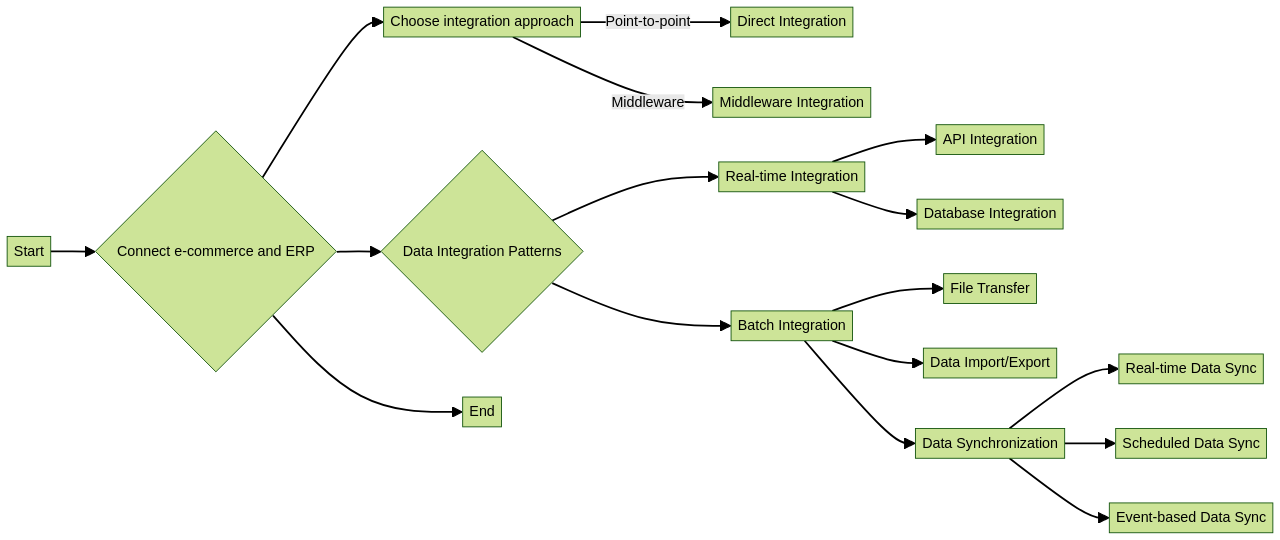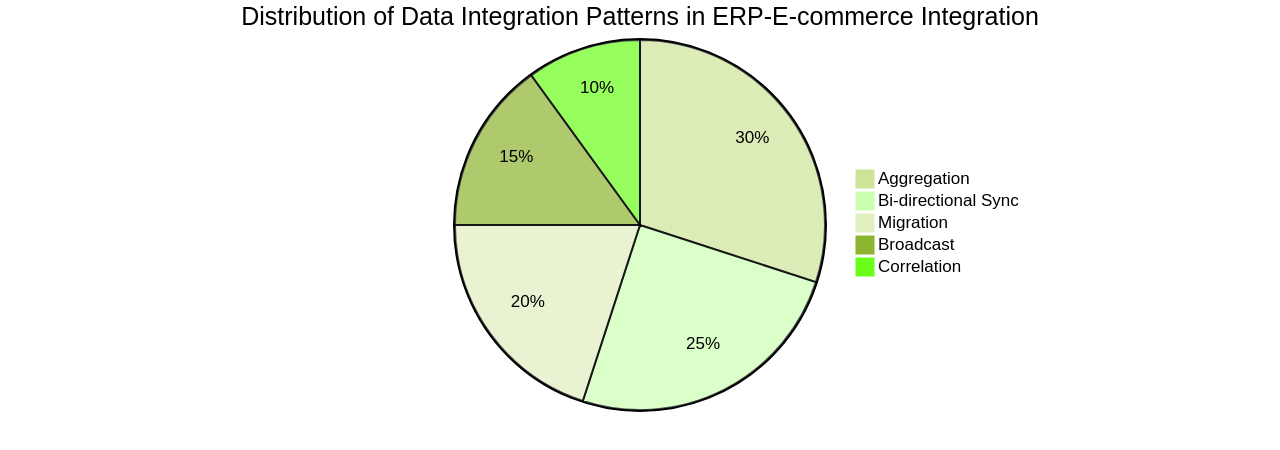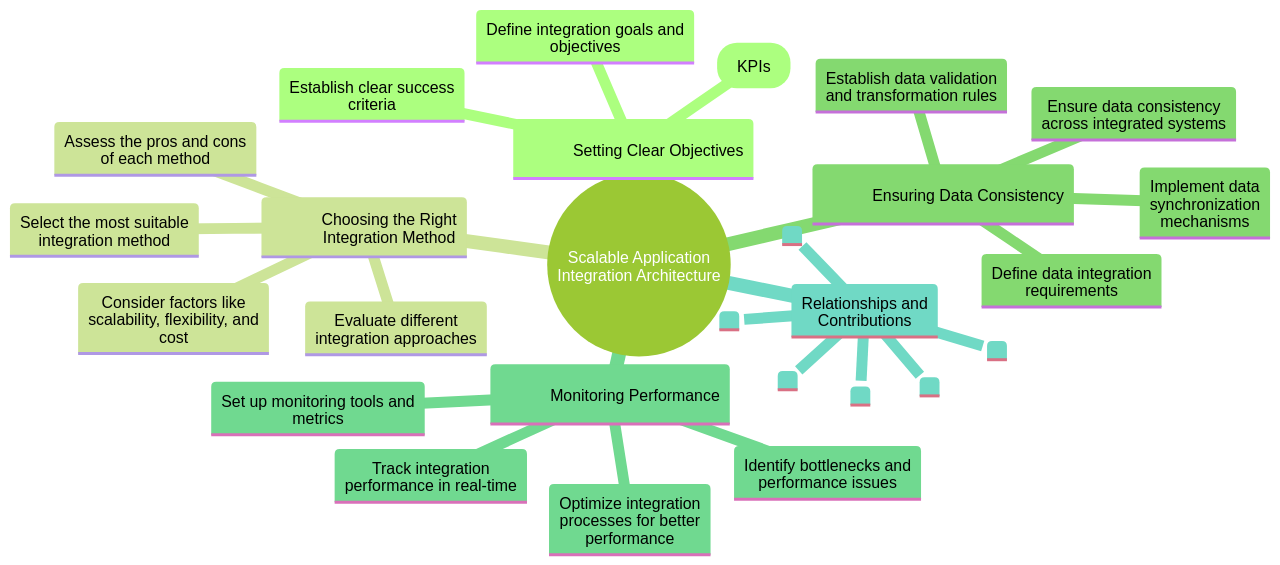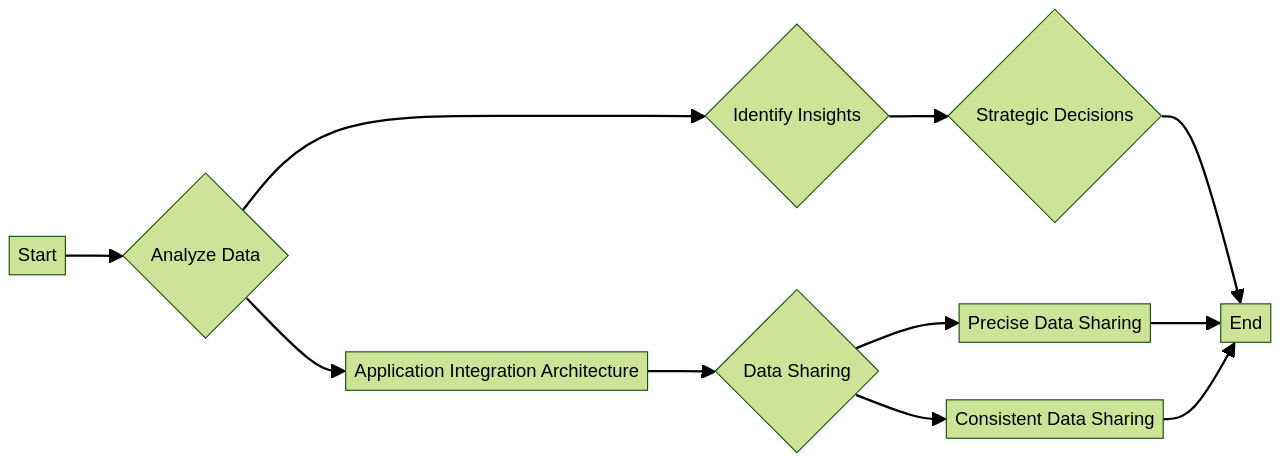Introduction
Effective application integration is crucial for optimizing online sales and operations in today's digital landscape. By seamlessly connecting various applications and systems, businesses can streamline processes, enhance customer experiences, and drive growth. In this article, we will explore the importance of application integration architecture for e-commerce, the key elements of implementing scalable integration architecture, the challenges of managing website performance and stability, leveraging data-driven decision making in application integration, and the benefits of optimizing online sales and operations through effective application integration. We will delve into real-world examples and best practices to provide insights and guidance on how businesses can harness the power of application integration to achieve success in the digital marketplace.
1. Understanding the Importance of Application Integration Architecture for E-commerce
As the digital landscape continually evolves, so too do the demands on e-commerce businesses. To stay competitive, it's essential to effectively integrate various applications and systems. This is where the role of Artificial Intelligence Assistant (AIA) becomes pivotal.
AIA acts as a powerful framework that facilitates the connection between various software applications, enabling them to work together and exchange data efficiently. The advantages of AIA are twofold. Firstly, it streamlines business operations, thereby boosting overall productivity. Secondly, it improves the customer experience by offering a consistent and unified interface across different platforms.
This integrated approach is of particular benefit to e-commerce businesses that must manage various components, such as inventory systems, payment gateways, and customer relationship management systems. By integrating these components effectively, businesses can enhance operational efficiency, make data-driven decisions, and boost profitability.
Boost your operational efficiency and profitability with effective integration.
One of the crucial aspects of this integration process is the connection between the e-commerce platform and the Enterprise Resource Planning (ERP) system.

ERP systems are vital for managing various aspects of online shops, such as sales orders, order fulfillment, supply chain, and inventory.
There are primarily two approaches for ERP-e-commerce integration: point-to-point (P2P) integration and middleware integration.
Explore our ERP-e-commerce integration solutions for seamless and scalable integration.
P2P integration is a cost-effective solution for connecting a limited number of applications. However, as the number of applications increases, this approach can become challenging to manage.
On the other hand, middleware integration, including hub and spoke or Enterprise Service Bus (ESB), allows for reusing connections, which offers better scalability and performance. An alternative to ESB, known as Integration Platform as a Service (iPaaS), is more cloud-friendly and offers similar scalability.
There are five common data integration patterns for ERP-e-commerce integration: migration, broadcast, aggregation, bi-directional sync, and correlation.

Each pattern serves a specific purpose and is chosen based on the business's unique needs.
Implementing AIA in e-commerce businesses involves several best practices, including defining the goals and objectives, gathering and analyzing relevant data, starting with a specific use case, regular testing and monitoring, and clear customer communication.
The implementation of AIA can bring numerous benefits but also presents challenges like data integration, AI model training, customer adoption, personalization and recommendations, and privacy and security.
When effectively implemented, ERP-e-commerce integration can lead to numerous benefits. These include improved inventory management, enhanced customer experience, smoother B2B partner collaboration, and significant cost savings.
The integration of various applications and systems through a well-structured Artificial Intelligence Assistant can significantly influence the success of an e-commerce business in today's digital marketplace. It not only streamlines business processes but also enhances customer experience, leading to improved operational efficiency and increased profitability.
2. Key Elements of Implementing Scalable Application Integration Architecture
The journey to successfully implement a scalable Application Integration Architecture (AIA) requires a holistic strategy that encompasses several key aspects.

Primarily, setting clear objectives and identifying the applications that need integration is crucial. This calls for a deep comprehension of business operations and the workflows that these applications support.
Choosing the correct integration method is the next step. Options range from point-to-point integration, where each application is directly connected to all others, to a more scalable approach like the hub-and-spoke model. The latter connects all applications via a central hub, increasing collaboration and coordination among software developers, designers, and engineers. This model allows for one-on-one consultations with experts, providing guidance and support throughout the implementation process. Additionally, access to top-tier talent and flexible demand contractors can speed up development and testing.
Enterprise integration patterns are key to implementing scalable Application Integration Architecture. These patterns offer a technology-agnostic vocabulary and visual notation to solve integration problems. Challenges such as asynchrony, partial failures, incompatible data models, and API drift can be addressed by these patterns. Modern examples of these patterns can be seen in microservices and serverless architectures, as depicted in real-world implementations like Serverless Loan Broker GCP and Serverless Loan Broker AWS.
Ensuring data consistency across all integrated applications is another crucial aspect. This can be achieved by implementing proper data validation and synchronization mechanisms. Using a centralized database or data management system can maintain data consistency by providing a single source of truth for all integrated applications to access and update data. Regular data audits and reconciliation processes can also be implemented to identify and resolve any inconsistencies in the integrated data.
Lastly, it's essential to regularly monitor and adjust the performance of the integrated system to ensure optimal function. Key performance indicators (KPIs), such as response time, throughput, error rates, and resource utilization, should be tracked and analyzed. This allows for the identification of areas where performance may be lacking, and appropriate steps can be taken to optimize the implementation.
Strategies for optimizing performance include performance testing during the development and testing phases to identify any potential bottlenecks or performance issues early on. Ensuring that the infrastructure supporting the AIA implementation is properly scaled and optimized is also important. This may involve adding more servers, optimizing database queries, caching frequently accessed data, and implementing resource pooling or load balancing techniques. Code optimization is another important strategy that involves reviewing and enhancing the codebase of the AIA implementation to identify any performance bottlenecks.
In summary, the successful implementation of a scalable AIA involves setting clear objectives, identifying applications for integration, choosing the right integration approach, maintaining data consistency, and regular performance monitoring. The use of enterprise integration patterns and asynchronous messaging architectures can greatly aid in this process.
3. Overcoming Challenges in Managing Website Performance and Stability
Ensuring a superior user experience and high conversion rates in the digital landscape hinges on the performance and stability of an e-commerce website. A crucial aspect of this is the manner in which a browser renders web pages, loading resources such as images, scripts, and style sheets. Key milestones in the journey of website performance include the first paint and the first interaction, measurable and improvable using tools like Google Chrome's Lighthouse and Raygun's real user monitoring insights.
Resizing and compressing images and using modern formats are optimization strategies that significantly boost load times. Minifying JavaScript and CSS, judicious use of fonts, and reducing unnecessary plugins contribute to minimizing page weight. Furthermore, combining scripts, removing unneeded plugins, and using a tag manager reduces the number of requests, positively impacting performance. Inline JavaScript and CSS code can also be beneficial.
Controlling script loading using placement and async/defer attributes can notably enhance performance. Shortening server response time, implementing caching, and using Content Delivery Networks (CDNs) can also help improve load times. It's also critical to optimize slow-running JavaScript code by considering complexity, DOM manipulation, and event handlers.
The role of Application Integration Architecture (AIA) is pivotal in ensuring all integrated applications function seamlessly, enhancing website performance. It provides a stable platform for the applications to operate, reducing the chances of system crashes or downtime. Regular monitoring and performance testing are crucial in identifying potential issues before they escalate, allowing for timely resolution.
The ability of a website to support any traffic load, or scalability, requires planning and anticipation of peak load in advance using performance tools. It's necessary to maintain the same behavior of the application or website as the traffic or number of users increases. Factors to consider when scaling include total website traffic, number of concurrent users, complexity of infrastructure or website, and maximum load capacity.
Implementing a scalable AIA can help manage increased traffic or load on the website, ensuring stability even during peak times. This is particularly important for e-commerce sites, as a common reason for performance issues is a lack of resources, which can result in financial losses. E-commerce sites often have slower load times compared to non-e-commerce sites, despite desiring sub-two-second response times.
Implementing an AIA involves following some best practices, such as defining clear integration goals, using standardized protocols, planning for scalability and flexibility, implementing security measures, employing monitoring and error handling, documenting the integration process, and thorough testing. These practices ensure the successful integration of applications, enhancing website performance and stability.
In cases of successful AIA implementations for website performance, BestToolbars.net offers valuable information and insights. Their team of software developers, designers, engineers, and specialists provide innovative solutions tailored to specific needs, helping to enhance website performance.
Performance testing techniques such as load testing, stress testing, performance profiling, and the use of monitoring and analytics tools can be used to identify and resolve issues in an application or website. These techniques ensure optimal performance for end users.
To manage increased website traffic, it's important to implement scalable AI solutions. These solutions can efficiently handle the influx of visitors to the website without compromising its performance. AI-powered analytics provide valuable insights into user behavior and traffic patterns, allowing for proactive optimization and personalized user experiences.
The integration of multiple applications using an AIA is facilitated by code snippets that allow communication and data exchange between the applications. These code snippets can be implemented by software developers, designers, and engineers to craft innovative solutions tailored to specific needs.
In conclusion, optimizing website performance and implementing a scalable AIA are critical for managing the online sales and operations of a company. It ensures the success and growth of its e-commerce platform, leading to increased revenues and improved customer satisfaction.
4. Leveraging Data-Driven Decision Making in Application Integration
Utilizing data-driven decision-making in the sphere of application integration can significantly enhance business growth.

By meticulously analyzing data from interconnected applications, businesses can tap into valuable insights about customer behavior, market trends, and operational effectiveness. These insights can serve as a beacon, guiding strategic decisions, enabling businesses to refine their operations, enhance customer experiences, and stimulate growth.
A well-implemented Application Integration Architecture (AIA) can play a pivotal role in ensuring that data across all applications is shared and analyzed with consistency and precision. Moreover, the incorporation of advanced analytics tools can bolster data analysis and reporting capabilities.
For instance, Dovetail, an integration platform based on Apache Camel, simplifies the integration of applications. With its comprehensive library of ready-to-use integration components and an intuitive drag-and-drop interface, Dovetail enables building integrations without the need for programming expertise. Furthermore, it ensures the security of both the application and the integrations made with it.
Similarly, DigitalAI offers Agility, a product that provides visibility across the entire application lifecycle, minimizing risks associated with application delivery delays. Its marketplace, Agility Sync, offers ready-to-use connectors for quick setup of integrations and an open API for data transfer from other vendors' solutions. This allows for innovative use cases such as receiving application development status from Jira or performance testing information from BlazeMeter.
In essence, a well-structured integration platform lays the foundation for businesses to effectively leverage data-driven decision-making. By integrating advanced analytics tools and ensuring secure and accurate data sharing, businesses can gain a competitive advantage and drive growth."
Utilizing data to guide decision-making processes in application integration allows for a deeper comprehension of the data being utilized, leading to more precise and reliable integration outcomes. This approach enables organizations to discern patterns and trends in the data, optimizing the integration process, and improving overall efficiency. By leveraging data-driven decision making in application integration, organizations can make strategic choices that align with their specific needs and goals, leading to improved results and outcomes.
When it comes to analyzing data from integrated applications, it's crucial to ensure the data is accurate and reliable. This can be achieved by implementing data validation processes and conducting regular data quality checks. A well-defined data integration strategy should be in place, including identifying key data sources, determining data integration requirements, and establishing a data governance framework. Additionally, a robust data analytics platform capable of handling large datasets, performing complex data transformations, and providing advanced analytics capabilities should be used.
By analyzing relevant data, such as user behavior, feedback, and performance metrics, organizations can make informed decisions to optimize their integration process and enhance the overall customer experience. This data-driven approach allows for identifying pain points, understanding user needs, and implementing targeted improvements to streamline the integration process and provide a seamless experience for customers.
To optimize operational efficiency through data analysis in application integration, strategies like utilizing data integration tools and technologies that allow for the seamless integration of data from various applications and systems should be employed. This can help to streamline processes and eliminate manual data entry and duplication. Another strategy is to implement data analytics and business intelligence tools that can provide real-time insights into operational performance and identify areas for improvement.
Consistent and accurate data sharing is crucial in application integration. It ensures that information flows seamlessly between different systems and applications, enabling them to work together effectively. With consistent and accurate data sharing, organizations can avoid errors, reduce manual data entry, streamline processes, and provide a better experience for users.
5. Optimizing Online Sales and Operations through Effective Application Integration
Application integration can revolutionize online sales and operations, completely redefining business operations. Looking at the case of Bayer Crop Science, the company substantially accelerated its product development speed by utilizing API-led integrations, achieving a 200% increase in speed and a five-fold boost in their market reach. They addressed issues related to custom point-to-point connections and siloed data systems by implementing MuleSoft's Anypoint Platform. This integration allowed Bayer to unify Salesforce with its existing legacy systems, creating a unified view of customer data and improving customer service. The result was a 70% decrease in process functions and a 20% decrease in overhead security governance.
Integrating applications doesn't just bolster internal processes, it also significantly enhances the customer experience. For example, integrating inventory management systems with e-commerce platforms allows businesses to automate inventory updates, effectively reducing the risk of stock-outs or overstocking. This level of automation not only bolsters efficiency but also enhances the customer experience by ensuring product availability.
Moreover, integrating CRM systems with sales platforms can endow sales teams with real-time customer data, enabling them to tailor their sales approach and consequently improve conversion rates. This was the case for Pilot Flying J, a travel center operator in North America. Adopting an omnichannel strategy, they integrated backend systems with digital customer-facing technologies, including Salesforce's sales, service, and marketing clouds. This integration enabled Pilot Flying J to launch a mobile app called MyPilot, which provides drivers with real-time information and personalized offers, resulting in a two-fold year-over-year growth in app users.
Streamlining processes through application integration can greatly improve efficiency and productivity within an organization. By integrating various applications and systems, data can flow seamlessly between different platforms, reducing manual work and minimizing errors. This can lead to faster and more accurate decision-making, improved collaboration between teams, and ultimately, enhanced overall business performance.
One way to improve efficiency with application integration is to ensure that software developers, designers, and engineers work harmoniously to craft innovative solutions. By integrating existing teams with quick proof of concept projects, bug fixes, and market alignment, organizations can streamline their development process and optimize resource allocation. Additionally, leveraging consulting services can provide access to top-tier talent and flexible demand contractors, speeding up development and testing while reducing costs.
Efficient application integration can provide a seamless and consistent interface across all touchpoints, driving customer loyalty and repeat purchases. By following the examples of successful companies like Bayer Crop Science and Pilot Flying J, businesses can optimize their online sales and operations, delivering a superior customer experience, and driving business growth.
Conclusion
In conclusion, effective application integration architecture is crucial for optimizing online sales and operations in today's digital landscape. By seamlessly connecting various applications and systems, businesses can streamline processes, enhance customer experiences, and drive growth. The integration of applications through a well-structured Artificial Intelligence Assistant (AIA) can significantly influence the success of an e-commerce business. AIA acts as a powerful framework that facilitates the connection between software applications, improving operational efficiency and offering a unified interface across different platforms. It also plays a pivotal role in ensuring data consistency and stability, enhancing website performance, and managing increased traffic or load on the website. Leveraging data-driven decision making in application integration allows businesses to tap into valuable insights about customer behavior, market trends, and operational effectiveness, leading to improved results and outcomes.
To optimize online sales and operations through effective application integration, businesses should consider implementing scalable AIA solutions that align with their specific needs and goals. This involves setting clear objectives, identifying applications for integration, choosing the right integration approach (such as point-to-point or middleware integration), maintaining data consistency across integrated applications, regularly monitoring and adjusting system performance, and leveraging advanced analytics tools for data analysis. By following these best practices and learning from successful real-world examples like Bayer Crop Science and Pilot Flying J, businesses can harness the power of application integration to achieve success in the digital marketplace.
Start now to optimize your online sales and operations through effective application integration!





